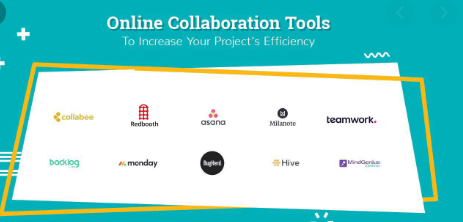There is no type of business that has a greater need for online collaboration tools than a small business. Its business model is based on the collaboration of its employees together with client collaborations.
As a small business owner myself, I can attest to the fact that choosing the right online collaboration tools is critical to the efficiency of operations.
Online collaboration tools are not limited to being used by agencies, of course, as more and more employees work remotely. Even if employees are in the same office, the need for so much work to be done online in the cloud also necessitates the existence of these tools for any business.
While your agency is probably already using a variety of online collaboration tools, this list was created to helping you find missing pieces as well as suggest some tools you might not already be using.
Without further discussion, on to my list of recommended online collaboration tools!
Video Communication | 8×8
The number one thing you need to do to collaborate is to be able to communicate, preferably by video, easily, reliably, and without commitments or complex contracts. That’s where 8×8 comes in.
Skype works well for one-on-one calling, but it doesn’t cope with larger groups very well. That’s because it broadcasts everything heard by everyone’s computer. Add more than a handful of people, and you have all kinds of echoes and background music.
Fortunately, there’s 8X8, and it was designed with business in mind. At its core, 8X8 is a video conferencing and meeting web streaming service.
You can use this to manage company phone systems, broadcast investor meetings, or hold a conference from several remote locations. With a wide range of free and paid features, you’re sure to find something suitable for your team.
Talent Management | Upwork
Need to supplement your current workforce with freelance talent? It’s fairly easy with Upwork. One of the largest online talent marketplaces, Upwork provides you with access to top-quality talent from around the world.

I love the fact that I can post a job on the platform, and then wait for interested freelancers to apply.
Once a potential freelancer has been identified, the internal messaging application within Upwork takes over. If a freelancer is attentive, he will message me back and discuss his credentials and the project.
After hire, we can exchange messages on the site, or with a pair of desktop and mobile applications that send messages and document time spent on hourly contracts.
Have a whole bunch of freelancers working on your project? Add them to a group chat room within Upwork. You will keep payment details and similar discussions in the private chat, but any collaboration can be done in group chat. It’s a real convenience.
See what Cake HR has to say about the platform here.
Another tips and tricks article, for freelancers and clients alike, is available on Time Doctor. Upwork features talent with all kinds of specializations, from writing and editing to design and web development.
Writer Management | Writer Access
If your needs are mainly in the areas of writing and editing, there are some simpler tools than Upwork. I find that one of these is called Writer Access.
Writer Access has a very specific niche: it only registers writers who live in the US, and they have to pass rigorous skills tests. Tired of sifting through applicants who don’t speak English well enough? This is a great place to go to.
This website is designed specifically for us content marketers in mind, and it thoroughly vets those who want to join as freelancers. In addition, it sets minimum pay rates based on the writer’s skill level.
Plus, everything is Copyscape before your invoice is submitted, and plagiarism offenders have kicked off the platform. No scammers here!
Core Communications | Slack
Want to communicate with all the members of your team, without using email all the time? That’s what Slack does, and does it very well.
Slack, in a nutshell, is a mixture of email and chat functions paid for by the SaaS model. Here, you can set up different chat rooms based on topic, and everyone can participate where they need to.
One of the biggest advantages of Slack is that you can have discussions with more than one person at a time. In that way, it’s similar to Microsoft Teams and similar products.
At the same time, Slack sets itself apart with the ability to let people know when someone’s going to be offline for an extended period. Think of it as the “away message” that comes back when emailing someone on vacation. You can find a great description of the service here.
Bottom line: I am a late adopter but love the ability to replace email and stay in better touch with my team.
Project Management | Asana, Trello
If your team is like most, you have a bunch of people doing different tasks, and it can be hard to coordinate. Old-school organizations still use spreadsheets and email, but this is much harder with a remote workforce.

That’s why I like two different project management tools, Asana and Trello.
Asana
This SaaS application is great if you have a small team with fairly integrated tasks. What Asana does best is make it easy for everyone to see what others on the team are doing, and exchange messages/coordinate as necessary.
You can prioritize tasks to ensure that the most important things get done first, and use a calendar to show what’s next. In addition, there are good organizational tools so you can keep communications about a particular task together.
If you want an easy-to-use, traditional project management system for a small team, this is a great choice.
Trello
Another tool where you pay by the user. Trello works by using “project boards” with virtual sticky notes. There are columns, such as “to do” and “completed,” that help track the progress of a project.
You can also assign projects to different teams and freelancers through the platform. Different types of projects have their own type of project board, from IT development to HR recruiting or onboarding.
Overall, Trello is very user-friendly, and a favorite of large and small businesses alike. I like the fact that it’s a visual way to see what’s being done, by whom, and on what schedule.
Time Management | Rescue Time
Ever feel like you and your employees show up to work, and don’t get much done all day? Well, if you’re like most people, it’s because you get distracted. And, let’s be honest, loss of productivity costs your company money, and for employees who work as needed, family time.
Rescue Time helps to keep distractions in check. At its most basic, this application is a time tracking program, but with a twist. It is set to detect what someone is doing on each workstation and make a report on it.
Time spent on each activity is tracked, and a report is generated daily. Just set categories of computer activities, like surfing news sites or typing in Word, and designate whether or not it is distracting, and to what degree.
While this is a great application for your personal use, it’s also excellent at a corporate level. Experts recommend that you tell employees that they’re being tracked on their work computer, and even offer incentives for working hard during the day.
This way, you can build trust with employees and foster healthy competition.
Social Media Dashboard | AgoraPulse
Unless you only have a single person managing your agency’s social media accounts, and sometimes even if you do, social media dashboards are very useful. I’d even call them essential.
After all, who wants to be left behind because they can’t keep track of all their accounts?
My favorite tool is AgoraPulse. Cheaper than most of its paid competitors with plans starting at $99 per month, AgoraPulse allows you to pre-schedule social media posts. Then, the program keeps track of all forms of engagement with your content.
You can even view results on your mobile phone, and use the platform to identify industry-specific influencers.
I also like the fact that AgoraPulse offers a comprehensive view of your social media scene. It helps you boost your ROI from social posts and advertising by determining what works and what doesn’t.
Have a post that rubbed people the wrong way? You’ll be able to tell that at a glance when you look at your tracking reports and response “inbox.” Overall, a great tool for content marketing agencies.
Editorial Calendar Management | CoSchedule
Want a tool that lets you organize all your content in one place? I know that being able to see what all my content writers and editors are doing at a glance is a godsend. That’s why I use CoSchedule at my agency.
CoSchedule offers an all-in-one tool called Marketing Suite that allows you a birds-eye view of content marketing and social media operations. At the same time, you can determine who on your team sees what.
This both allows for some data security, as well as avoiding the distraction of too much information. In addition, CoSchedule helps with certain mundane tasks, such as converting Google documents to WordPress.
Just something to keep in mind with this tool: Its weakness is the actual content management feature. While you can view, index and edit documents, CoSchedule doesn’t allow for website management or SEO tasks. You’ll want a good-quality SEO plugin and appropriate Web hosting services.
File-Sharing | Dropbox, Google Drive
It almost goes without saying that file-sharing is a critical task for any agency. Whether it involves getting a work product from your freelancers or just having a commonplace for members of your staff to put project files, there are several good options.
Dropbox: Want a really secure option that allows some coordination between members of the team? Dropbox has some enterprise-level options that allow for this. Paid for with a subscription fee, this file-hosting service helps you put everything in one place, and keep it organized.
Google Drive: Here’s a free competitor to the Microsoft version. All you need is a Google account, and anybody with permission can view and edit any file from anywhere.
The bottom line
Einstein is reputed to have said, ‘If I had one hour to save the world, I would spend 55 minutes analyzing the problem and 5 minutes coming up with a solution.’
We tend to do the opposite. We assume we know the cause and then charge ahead designing remedies for the wrong issue.
We need to find the root cause of the problem before even starting to think about possible tool solutions.

Many more posts to read:
